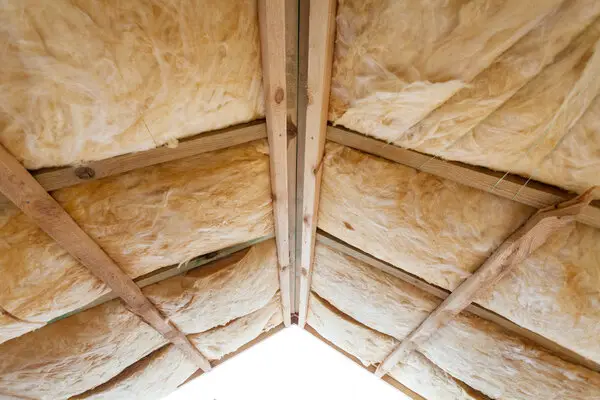Attic insulation is a barrier that prevents energy loss from the inside of your home to the outside and is a worthwhile investment as it reduces your energy consumption and warms up your home without turning up the thermostat. Many homeowners overlook their attic insulation but Flower Mound homeowners know better.
A certified and licensed Flower Mound handyman from Mr. Handyman of Flower Mound, Lewisville, and Denton can cushion your home against frigid colds or sweltering heat and help you save some cash on your utility bills. Our expert technicians are well-equipped and know how to ensure your attic insulation lasts you for many years to come.
Our Ace Flower Mound Attic Insulation Services
Although there are a handful of attic insulation materials, the one best suitable for your home depends on density, weight, and R-value per inch. Our professional technicians will perform an in-depth inspection of your attic space to determine what material will cocoon your home most efficiently. For example, your handyman will take appropriate measurements, and examine doors, ceilings, walls, and windows for any prior damage like cracks. We may also need to perform minor repairs before beginning the service.
OUR VERIFIED PROCESS FOR ATTIC INSULATION INSTALLATION
Our skilled technicians have a foolproof method for attic insulation installation. In many cases, loose-fill insulation is the chosen type of attic insulation in Flower Mound, and our team has all the experience, knowledge, and equipment needed to install loose-fill insulation—as well as other types of insulation—safely and correctly.
Here are the overall steps we take for loose-fill fiberglass attic insulation service:
-
Routine Inspection: During a routine inspection we will decide what R-value works best for your attic. The R-value indicates how well a type of insulation material can keep heat from leaving or entering your home. Basically the higher the R-value, the more effective it is for heat resistance. Most Flower Mound homes should insulate their attics at a minimum of R-38, indicating the layer of insulation is about 10 to 14 inches thick. This step is crucial as it’s not a matter of slapping on layers of insulation. Your technician has to carefully calculate the value, as extra thickness may not be cost-effective and if you already have old and existing insulation in place you’re just tossing away your hard-earned cash as it won’t make much of a difference for energy efficiency. Your handyman will also seal up any air leaks with caulk, spray foam, or weather stripping before you begin the installation.
-
Preparation: Insulation is typically installed on the floor of the attic so it’s good to prep your surroundings to make it easier for your handyman. For starters add some temporary lighting and lay out a few study boards across the joists to make a pathway. If you’re installing brand-new insulation and not doing a replacement we will examine the drywall of the ceiling beneath the joists for a backing which is known as the vapor barrier. If the vapor barrier is missing your technician can install one with no problem as this will serve as the base of the insulation. We will also baffle your soffit vents so they don’t get muffled and clogged by the loose fill insulation.
-
Tools Rule: Our technicians have all the proper tools for your attic insulation service, including standard safety equipment like safety goggles, gloves, flashlights, tape measure, staples gun, and insulation materials. They’ll be sure to use all the necessary tools they have to get the job done right.
-
Choose Your Material: Pick out your preferred insulation material based on your budget, effectiveness, and longevity. For example, fiberglass material typically comes in two versions: loose fill or batting insulation. Loosefill is best for awkward corners or angles and can be compared into small areas, whereas batting comes in three versions low, medium, and high batts, and can be placed evenly onto rectangular spaces.
-
Measure Material Amount: Our technician will gauge the amount of insulation you require. As a general rule of thumb, it takes 10 to 12 inches of loose fill to reach the R-rating of 38-40.
-
Apply The Insulation: Our technician will finally begin to apply the insulation material to the surface area from the base of the attic and continue to gauge how many more pounds will be required to completely fill the area. As a bonus, for loose fill, we’ll use a blowing machine to smooth out the surface of the loose fill application. We’ll go slowly and stop every few minutes to check the depth level of the insulation to ensure it’s even and carefully moved along the surface.
Common Types Of Attic Insulation In Flower Mound, TX
FIBERGLASS INSULATION:
Fiberglass insulation contains extremely fine glass fibers made of plastic and has multiple applications, from being laid down as a blanket, loose-fill, boards, and duct insulation. It’s one of the easier ways to insulate as it’s highly efficient, non-flammable, and not prone to moisture damage. But for you eco-enthusiasts here is a fair warning: it’s not environmentally friendly and emits toxic carcinogens which can be bad for your health if you inhale them, so we don’t recommend performing a DIY attic installation unless you have proper safety equipment.
CELLULOSE INSULATION:
Another plant-based fiber, cellulose is made from recycled paper wood pulp—in other words, newspaper or cardboard—and is used in closed walls or roofs to reduce building heat loss and stop noise pollution. Although pricier than fiberglass, it’s more fire resistant, prevents mold growth, stops insects and pests from infesting, and is more energy efficient in reducing your electricity bills. Plus it reduces the impact of your eco-footprint. The only drawback is that it is more susceptible to moisture absorption, reducing its capability over time as it stiffens, allowing cold drafts to seep back into the room.
SPRAY FOAM INSULATION:
Spray foam is a chemical-based spray-on product that is mostly used to insulate buildings by sealing cracks and gaps. The solution is concocted by blending isocyanate and polyol which react together to form and expand up to 60 times its liquid volume. This is the easiest to install as your trained technician can evenly coat entire swaths of your whole attic ceiling, floor, and beams with thick layers of spray foam, resulting in higher heat resistance and less heat transfer to other areas of your home. Although it has a higher price point, it can ably resist heat transfer by insulating seals as spray foam forges a tight barrier around the room to stop hot and cold air, vapor, and moisture from invading the inside of the building. Plus as a muffler, it prevents noise pollution by acting as a sound barrier.
Spray foam can either be open-celled or closed-cell too. That is, open cells with their more porous texture have lower heat resistance and are best used for the interior of your house, whereas closed-cell has a higher heat resistance and is fully waterproof, so it’s best used for exteriors.
MINERAL WOOL:
Mineral wool is similar to fiberglass with the exception that it’s made from natural fibers and not glass. Rock wool is made from fibers of stone, and slag wool is made from discarded iron ore. It’s not prone to excessive moisture absorption and isn’t easily flammable, so it acts as a buffer against any potential fires. Plus, it offers the ultimate shield against noise pollution as a natural sound barrier and is water-resistant so it won’t readily absorb water and encourage the growth of mold and mildew. Mineral wool is a less popular option than fiberglass and cellulose but is a great alternative for those looking for a more organic option compared to chemical and plastic insulation materials.
Why Choose Mr. Handyman For Attic Insulation In Flower Mound?

Don’t bother layering on sweaters when a cold draft rolls in–our Flower Mound attic insulation service is a win-win solution offering you a reduced monthly utility bill and a more cozy home. Our home repair, installation, and maintenance experts from Mr. Handyman of Flower Mound, Lewisville, and Denton will cloak your home with comfort.
Our experienced professionals have the tools and techniques to promptly and effectively furnish your attic with a thick coat of insulation the first time around. Our reputation speaks for itself and is backed by our quality workmanship and one-year parts guarantee and excellent customer satisfaction.
Frequently Asked Questions About Attic Insulation In Flower Mound:
HOW DO I KNOW IF I HAVE ENOUGH INSULATION IN MY ATTIC?
If you gaze around your attic and see that the insulation is almost level or below the attic floor joists, you need to add more insulation. The idea is that if you can no longer see the edges of your floor joists because of the topped-up insulation, you have enough material. Adding more material than that is typically counter-intuitive and will not be cost-effective
WHAT HAPPENS IF I COMPLETELY IGNORE GETTING ATTIC INSULATION?
Insulation helps to regulate the temperature of your home, and when you lack insulation you have nothing to retain your heated and cooled air indoors where it should be. Areas that have not been insulted will result in cold spots where the wall and ceiling touch, leading to moisture and mold issues that will require costly repairs. At the very least, it’s best to choose a budget option for attic insulation rather than flatly ignoring an attic insulation replacement.
HOW OFTEN SHOULD ATTIC INSULATION BE REPLACED?
We recommend a replacement every 20 to 30 years with early signs of deterioration beginning as early as 15 years after installation. This doesn’t include extraneous factors like severe weather that can rapidly reduce the lifespan of insulation and lead to early replacement requirements.
Mr. Handyman Is Here to Cozy Up Your Home!
Whether you’re in Flower Mound or nearby areas like Argyle, Denton, or Ponder, if you require an attic insulation service you can rely on Mr. Handyman of Flower Mound, Lewisville, and Denton.
Reach out to us today to learn more about our repair and installation services from one of our courteous customer service representatives.
 Click to call
Click to call




 Click to call
Click to call
